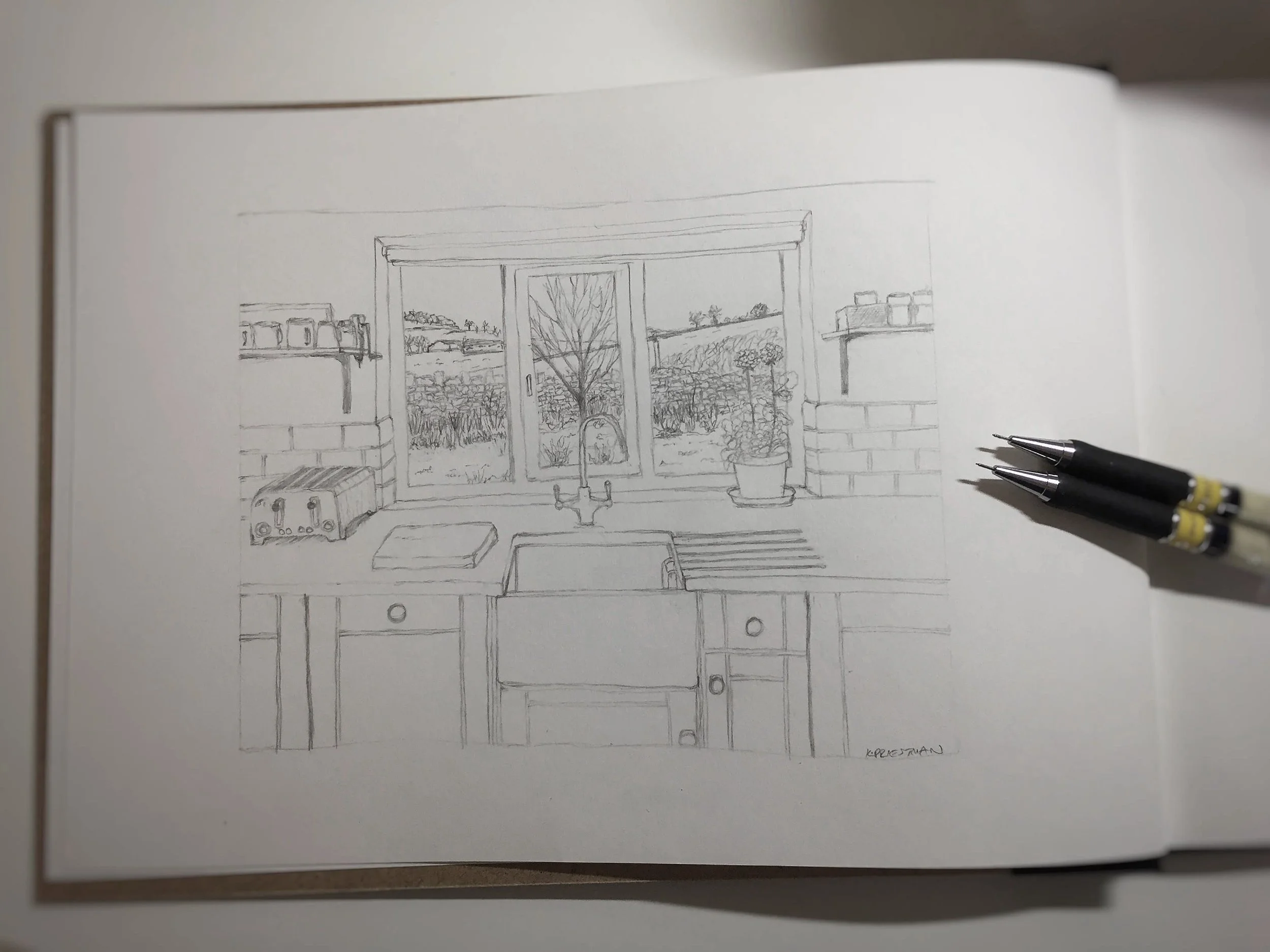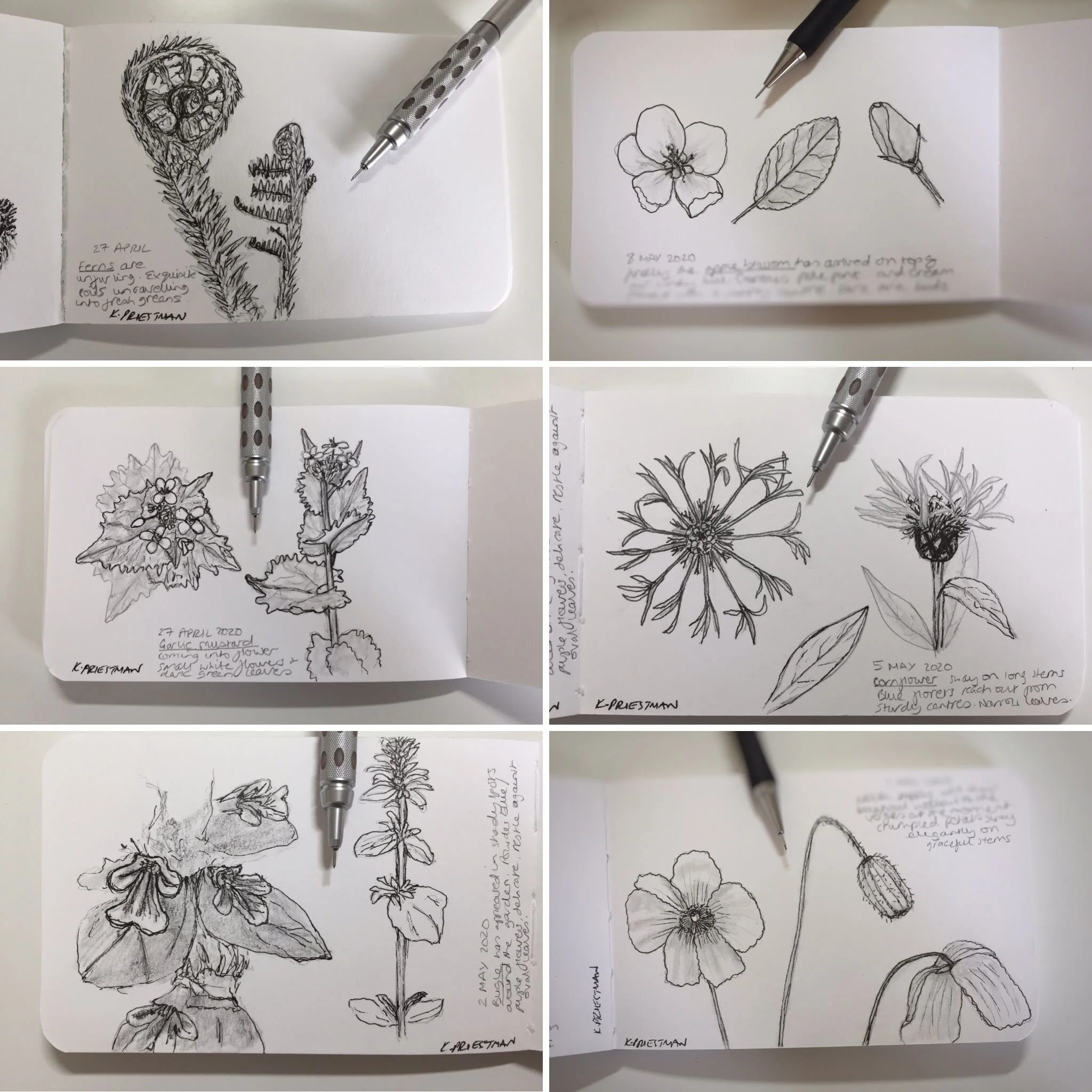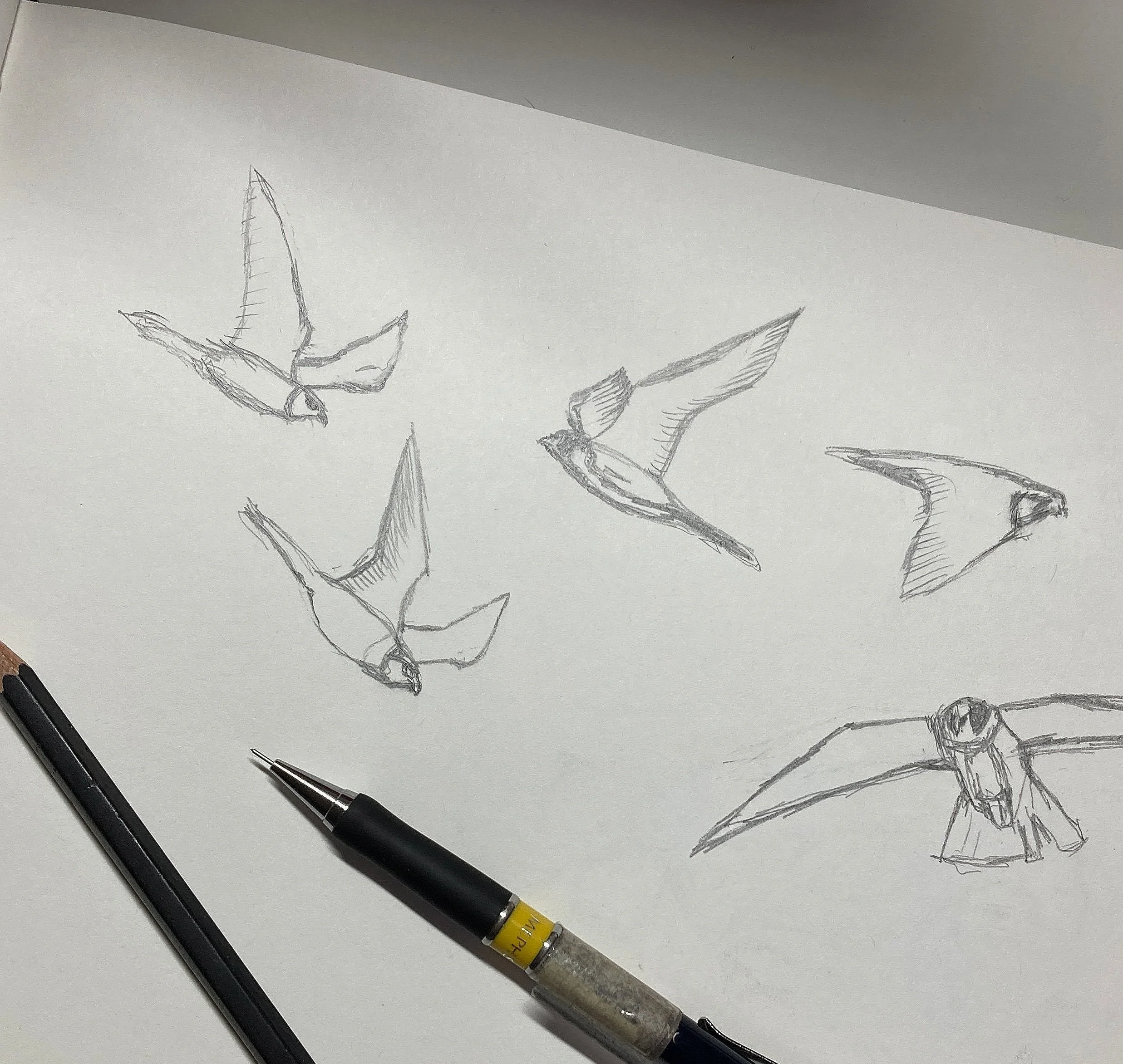What is the point of a sketchbook?
In this month’s blog post I’m taking a closer look at the humble sketchbook and pondering on the question: What is the point of a sketchbook?
Freedom
The primary worth of a sketchbook for my own art practice is total freedom to draw at will.
In the same way that a person keeps a secret diary, my sketchbooks allow me to draw without inhibitions, safe in the knowledge that they will not be scrutinised by anyone else but me.
Furthermore, each sketchbook scribbling has a story behind it and so serves to record a personal point in time, a notion of expression and ideas.
Skill builder
Drawing from life in a sketchbook is a great way to build skills in both observation and technique – even better if you can build this into a daily practice.
It could be a single object such as a vase, or a more elaborate scene, as in this example. The benefit of sketching everyday things around you is that you begin to observe the places and objects in your everyday life with new sight and appreciation, and there is a real joy and meaning to then transfer those things to the page.
A record of place …
A sketchbook is easily portable; it can be thrown into a bag for a trip away and used to record places and events.
Not only does it focus your awareness of place at the time, it is fabulous to look back through your drawings and recall not just the subject of the sketch but the sensory experiences, mood, conditions and light of where you were when you produced it; bringing the scene vividly back to life in a beautiful way that a split second click of a camera on a smartphone typically falls short of being able to do.
… and time
It’s also a gorgeous experience to use a sketchbook to record the passage of time, for example by sketching plants that ebb and flow with the passing of the seasons.
Again, this serves as a great record from one year to the next, hones observation and creates memories.
Test bed for composition
A sketchbook is a great way to test out the composition of an idea. Roughing out where you intend to place things on the finished paper or canvas really helps to highlight any areas of weakness in the composition.
The example on the right is of a sketch that explored the placement of features in relation to each other. An exploratory sketch such as this can be taken much further after the initial compositional flaws are ironed out by adding more detail and seeing in turn how that detail changes the look and feel of the piece.
It is often better to work out an idea upfront in a sketchbook, rather than risking your composition not working out on an expensive surface for finished artwork.
Familiarisation
Drawing in a sketchbook is a great way of familiarising yourself with your subject matter. By focusing on the shapes, features and form that make up your subject of choice, you build up observation and muscle memory that in turn brings a more rounded sense of characterisation and movement to a finished piece that may be lacking without this initial time spent sketching.
If you’ve ever wondered, ‘what is the point of a sketchbook?’, I hope that this post has given you a few pointers. Even better if it has encouraged you to try out sketching for yourself.
If you’re interested in purchasing a sketchbook but don’t know where to start, there’s a comprehensive selection to be found on online art store, Jackson’s Art, via the following link: shop sketchbooks*.
If you’re interested in finding out more about the types of graphite available for use in your artwork, check out my blog post, ‘Types of graphite for artists’.
Last but not least, many thanks for reading and I’ll see you on the next post.
*Please note that I am a member of Jackson’s Art affiliate scheme. I joined the scheme because having had firsthand experience of being one of their customers, I am happy to recommend this online art store to others. Being an affiliate means that I occasionally generate a small amount of revenue through affiliate marketing. This means that if you click a product link on my website and buy something, I may receive a small commission from the store as a thank you for referring you. It doesn’t cost you anything or alter the amount that you pay for a product.






